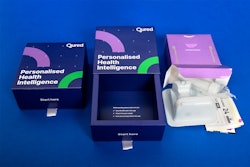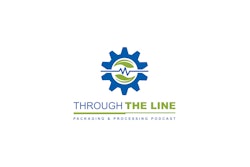Healthcare Packaging (HCP): What issues or trends do you see developing with regard to pharmaceutical packaging materials?
Bauer: Number one is the need for improved barriers. Newer drugs can be very sensitive to moisture and to oxygen. Standard blister materials will need to be stronger in protecting a drug from moisture and oxygen.
HCP: Specifically, what kind of materials are you suggesting?
Bauer: Cold-formed aluminum is the standard for providing a complete barrier, but many people don't like the opaque look of the blister, or its size. PCTFE (polychlorotrifluoroethylene), cyclic olefin copolymers, and polyvinylidene chloride represent some examples of existing barrier materials that meet more stringent demands. These materials provide high moisture and oxygen barriers, but thus far, the improvements have been primarily through increased material thickness. The use of desiccants and oxygen scavengers in the film, or the use of plasma coatings on PET or PVC, represent new ideas that may also work to increase barrier performance. The design, shape, and size of a blister are becoming more important. Some companies are using computers to conduct Finite Element Analysis. The computer models how a blister cavity will form, and how much thinning of material will take place in each area of the blister. This permits the computer to predict permeation of the blister. For confirmation of results, a blister can be prototyped and a cross-section measurement of materials thickness taken to determine if the simulation was accurate. The blister's performance can be tested. As the company gains knowledge, it can predict blister performance through the computer simulation, without the trial and error of testing on packaging materials, or trial and error making expensive blister tools, thereby reducing costs.
HCP: Improved barriers will likely up the cost for manufacturers. How will they justify that economically to management?
Bauer: Companies will pay for better performance, and if a drug requires that level of performance, it takes cost out of the question. When choosing a material, it's a matter of tailoring the material and the package to the end use. You wouldn't necessarily use these super-barrier materials across the board, but only for those drugs requiring high-barrier protection. Companies are becoming much more sensitive to manufacturing costs and paying more attention to make sure the packaging materials and package design deliver the best product protection and cost scenario.
- by Jim Butschli, Editor
Bauer: Number one is the need for improved barriers. Newer drugs can be very sensitive to moisture and to oxygen. Standard blister materials will need to be stronger in protecting a drug from moisture and oxygen.
HCP: Specifically, what kind of materials are you suggesting?
Bauer: Cold-formed aluminum is the standard for providing a complete barrier, but many people don't like the opaque look of the blister, or its size. PCTFE (polychlorotrifluoroethylene), cyclic olefin copolymers, and polyvinylidene chloride represent some examples of existing barrier materials that meet more stringent demands. These materials provide high moisture and oxygen barriers, but thus far, the improvements have been primarily through increased material thickness. The use of desiccants and oxygen scavengers in the film, or the use of plasma coatings on PET or PVC, represent new ideas that may also work to increase barrier performance. The design, shape, and size of a blister are becoming more important. Some companies are using computers to conduct Finite Element Analysis. The computer models how a blister cavity will form, and how much thinning of material will take place in each area of the blister. This permits the computer to predict permeation of the blister. For confirmation of results, a blister can be prototyped and a cross-section measurement of materials thickness taken to determine if the simulation was accurate. The blister's performance can be tested. As the company gains knowledge, it can predict blister performance through the computer simulation, without the trial and error of testing on packaging materials, or trial and error making expensive blister tools, thereby reducing costs.
HCP: Improved barriers will likely up the cost for manufacturers. How will they justify that economically to management?
Bauer: Companies will pay for better performance, and if a drug requires that level of performance, it takes cost out of the question. When choosing a material, it's a matter of tailoring the material and the package to the end use. You wouldn't necessarily use these super-barrier materials across the board, but only for those drugs requiring high-barrier protection. Companies are becoming much more sensitive to manufacturing costs and paying more attention to make sure the packaging materials and package design deliver the best product protection and cost scenario.
- by Jim Butschli, Editor


















